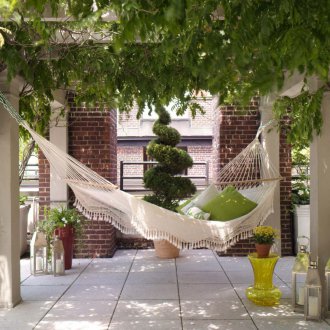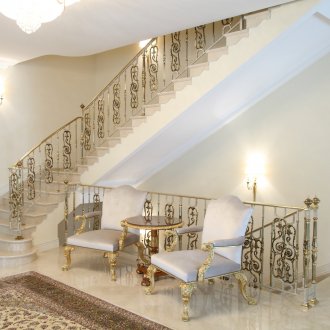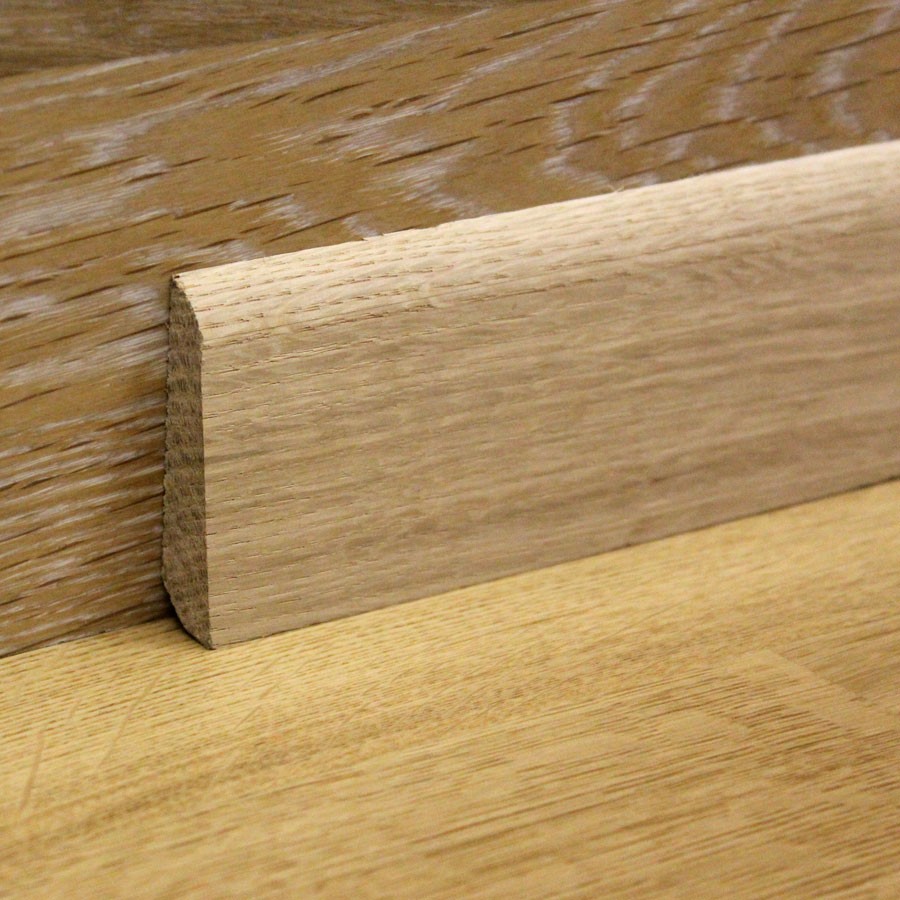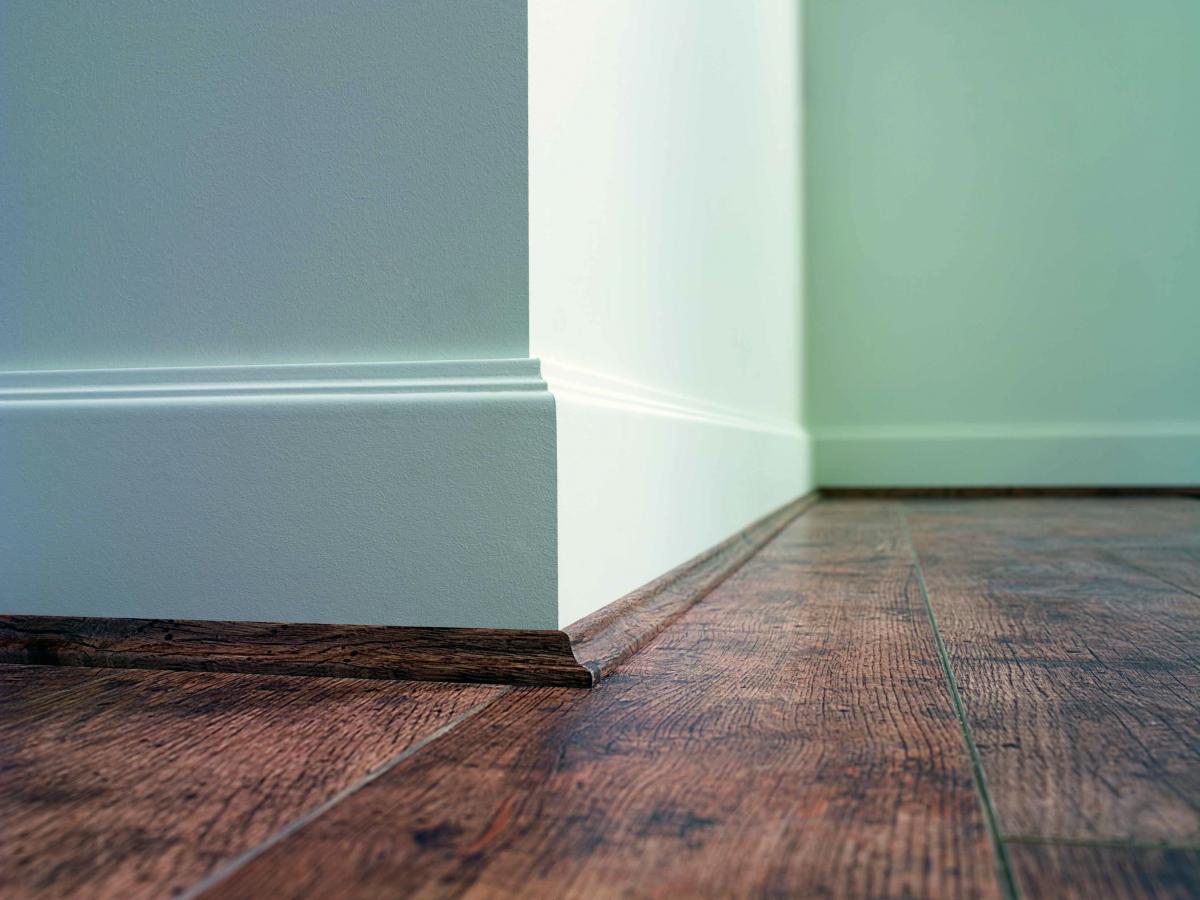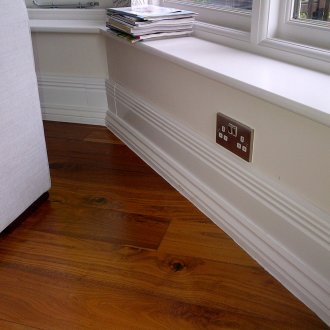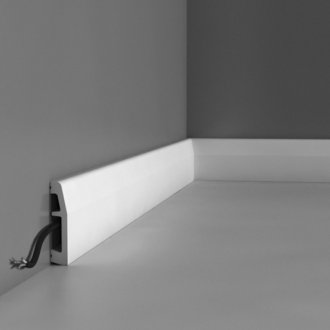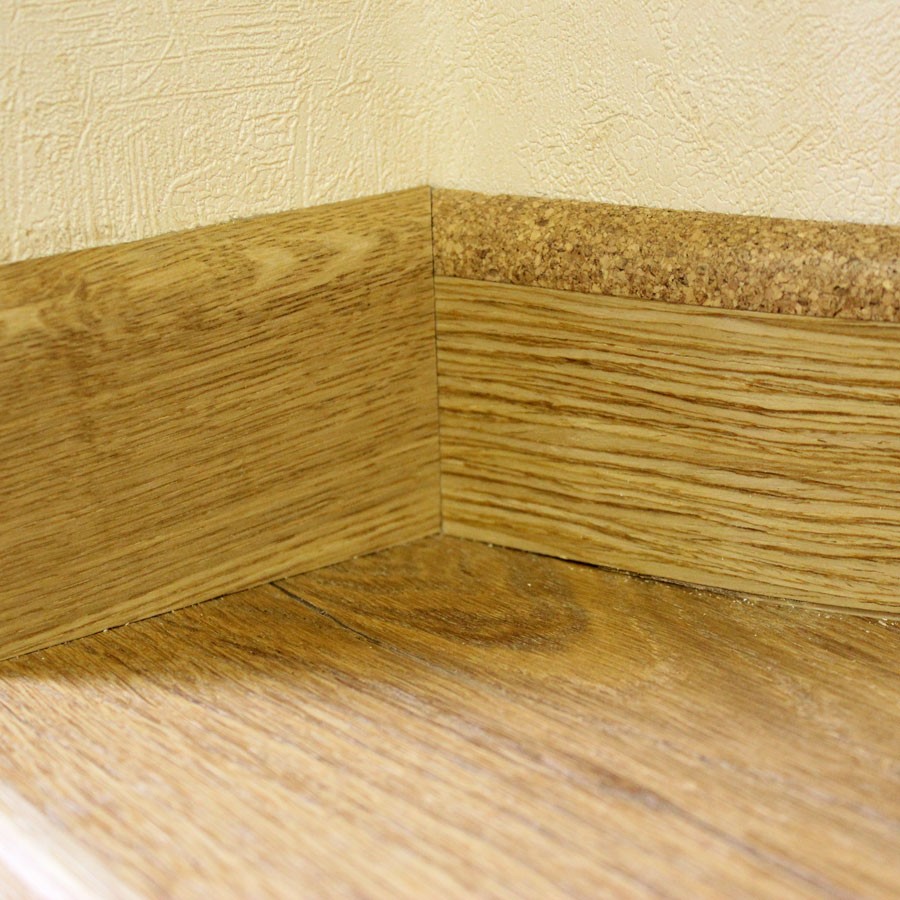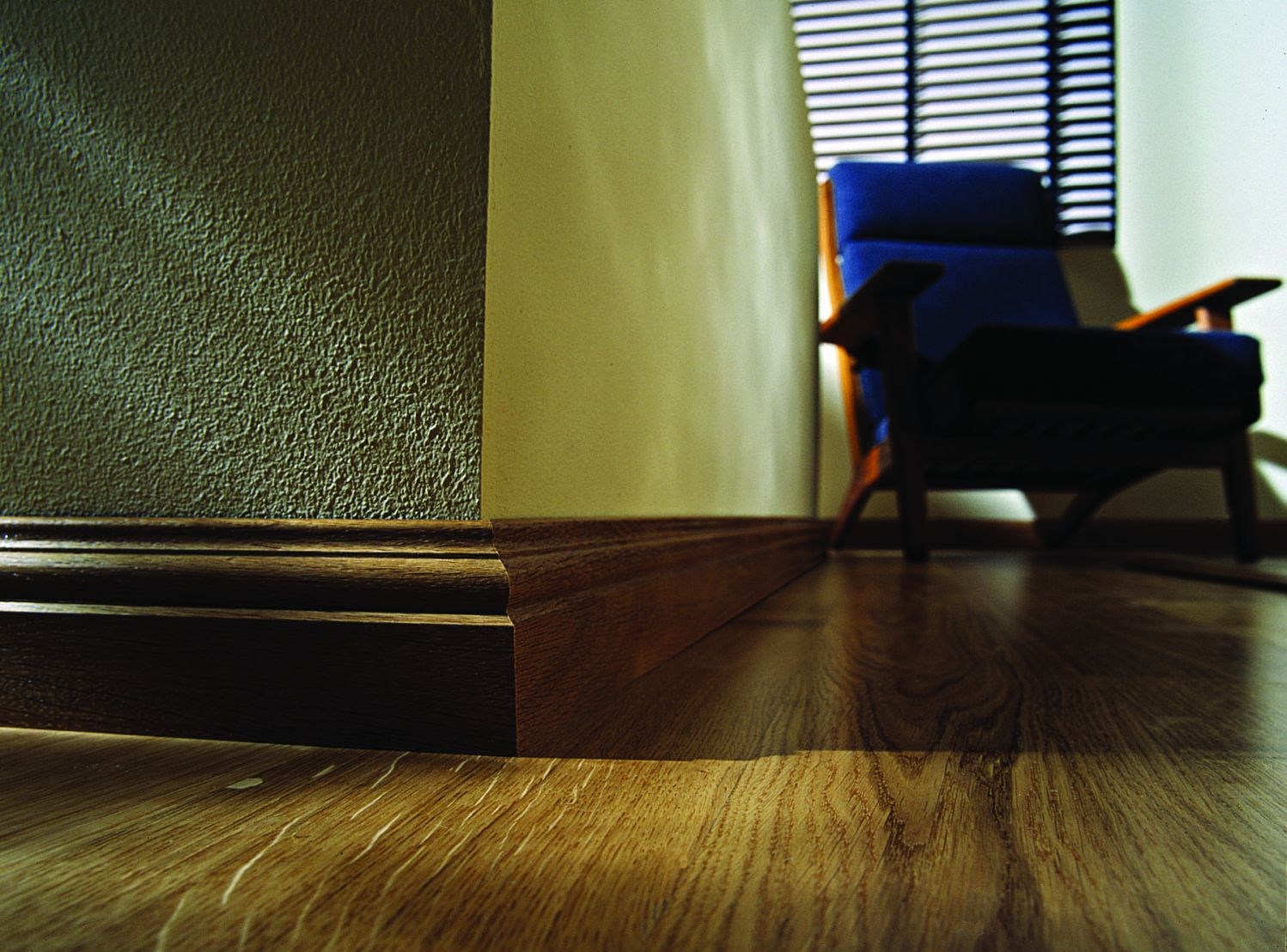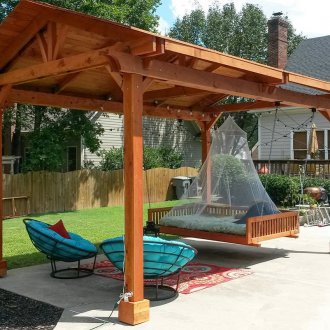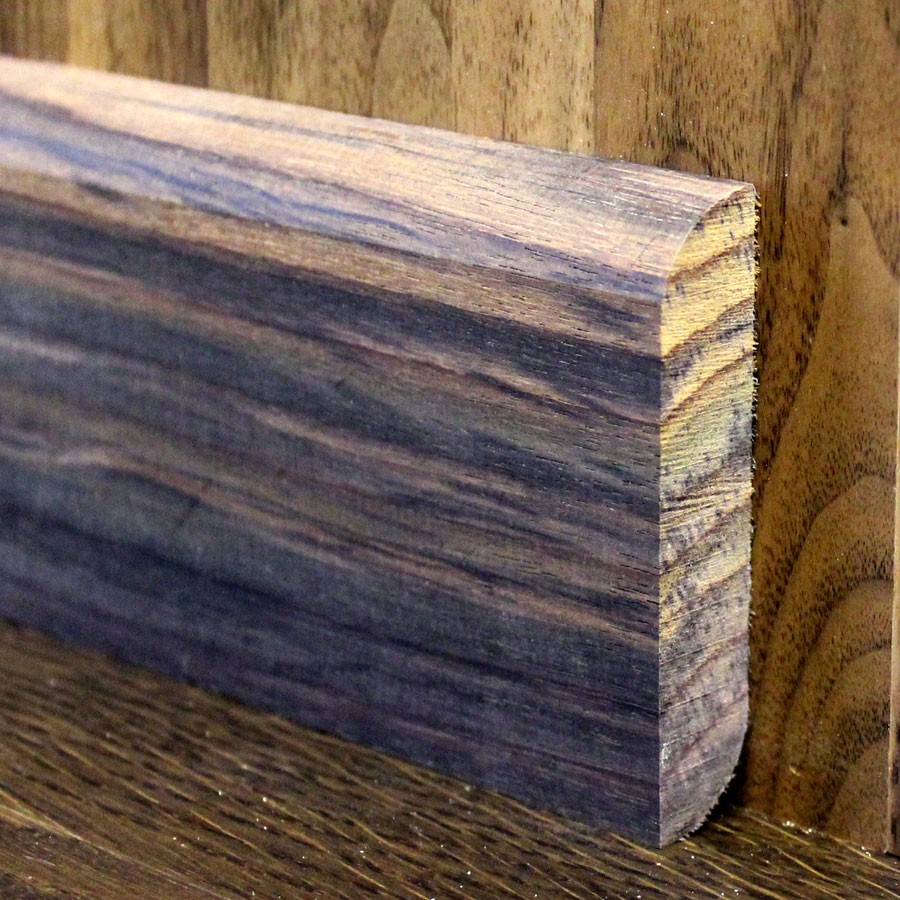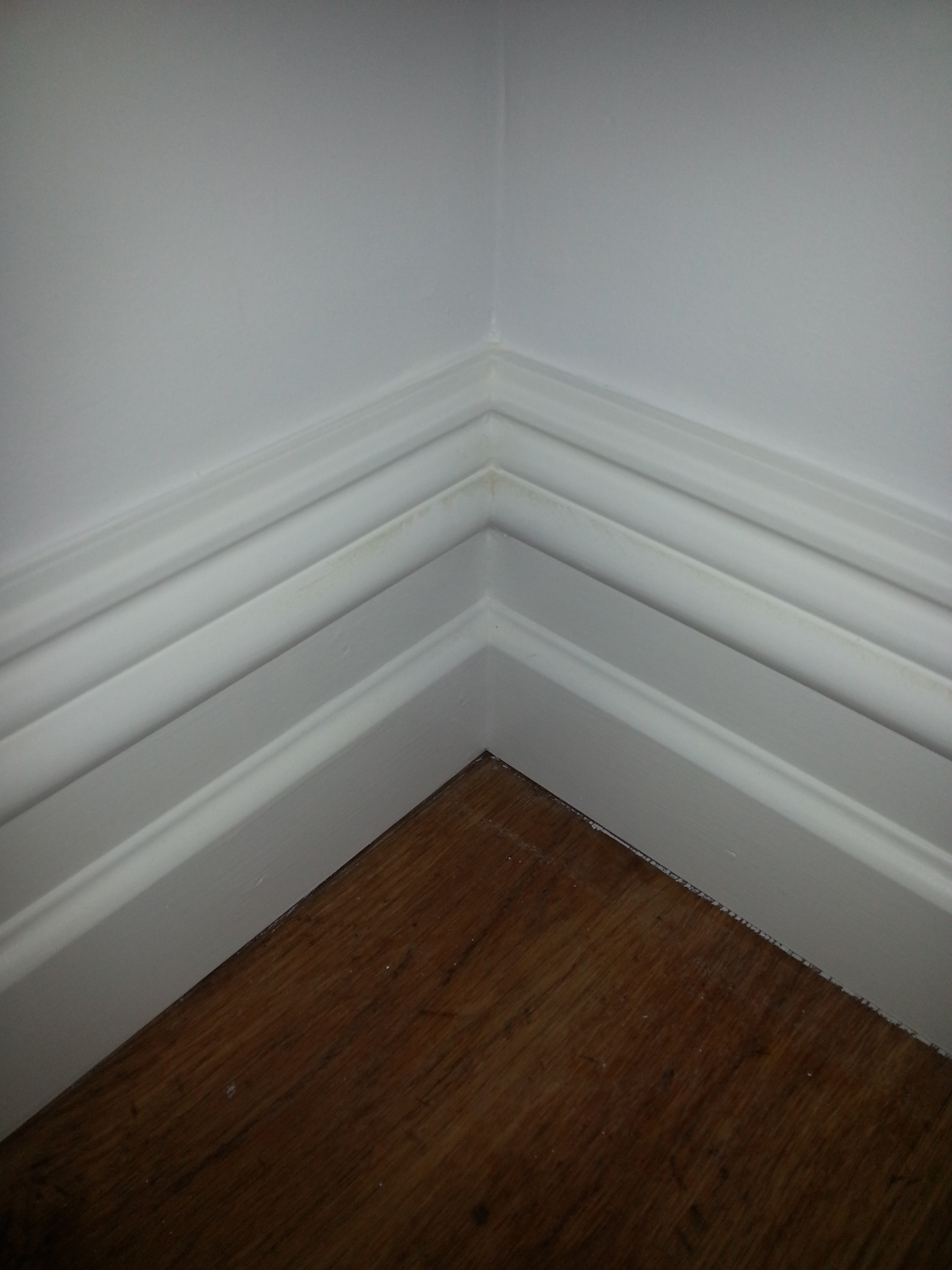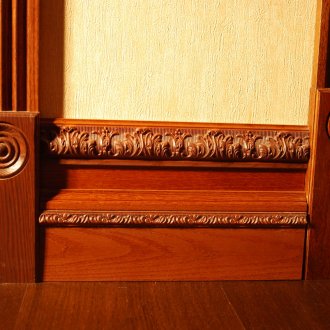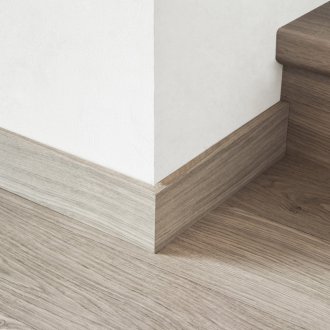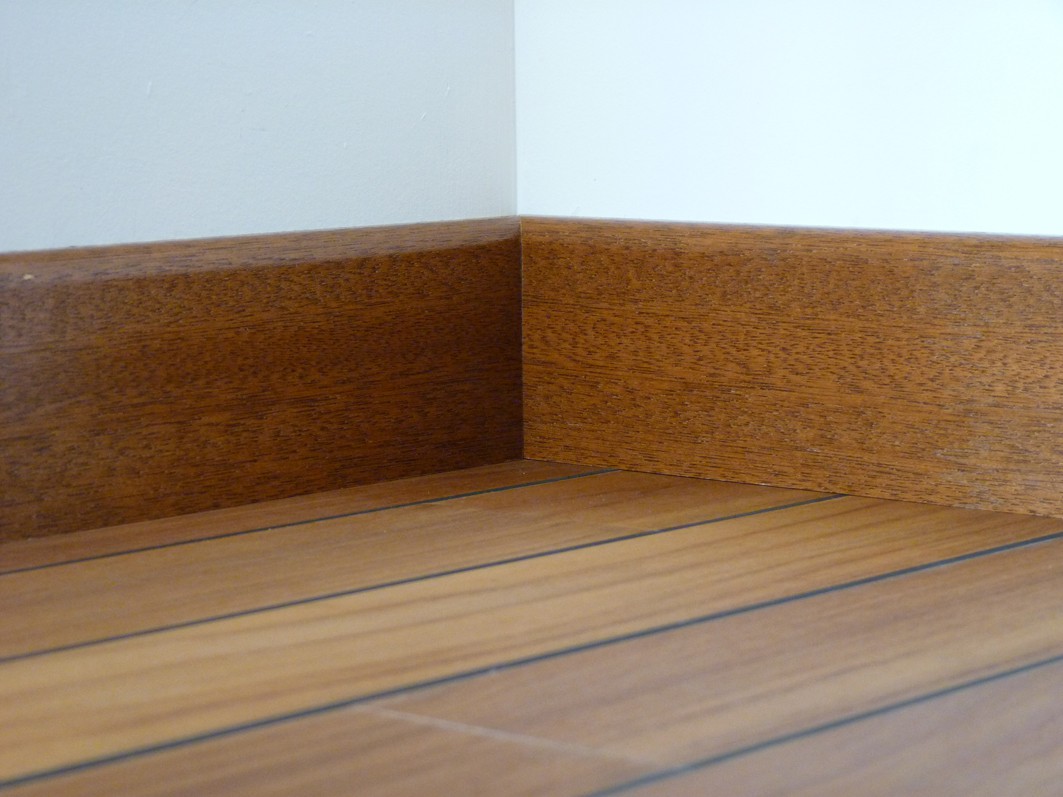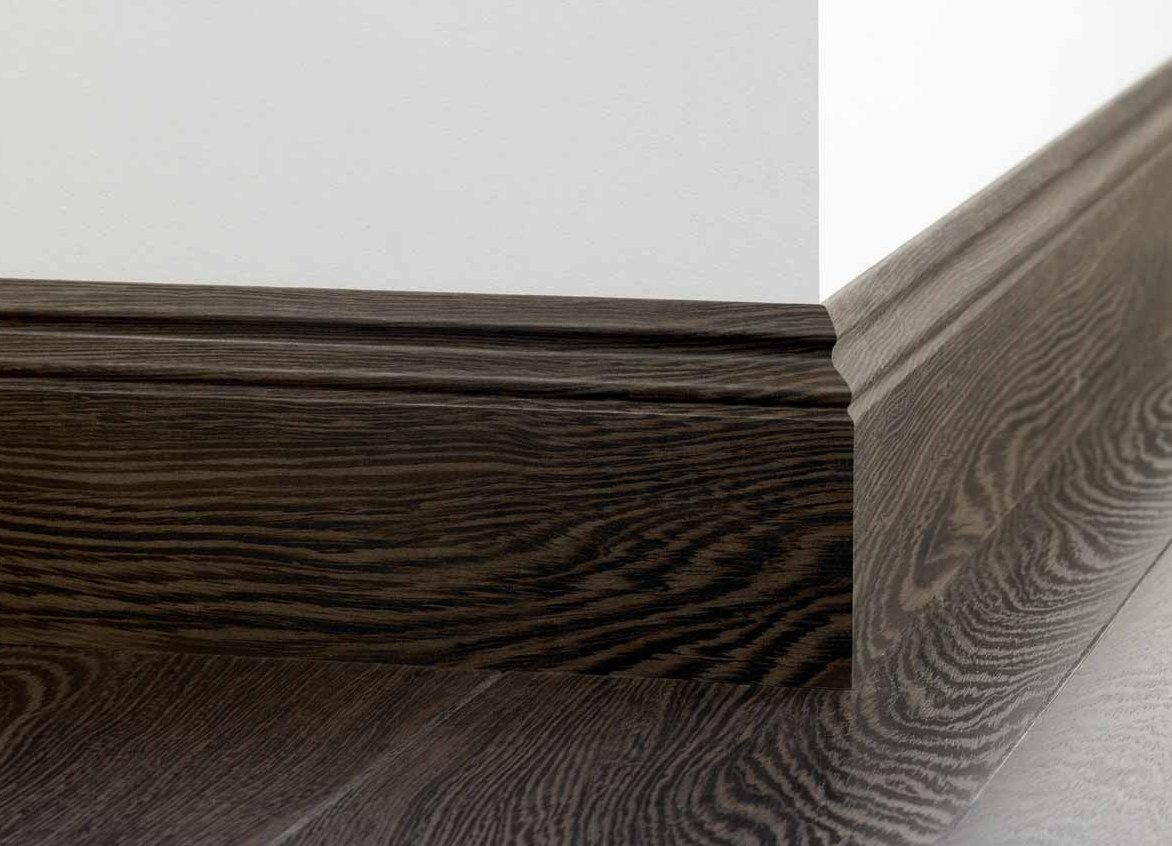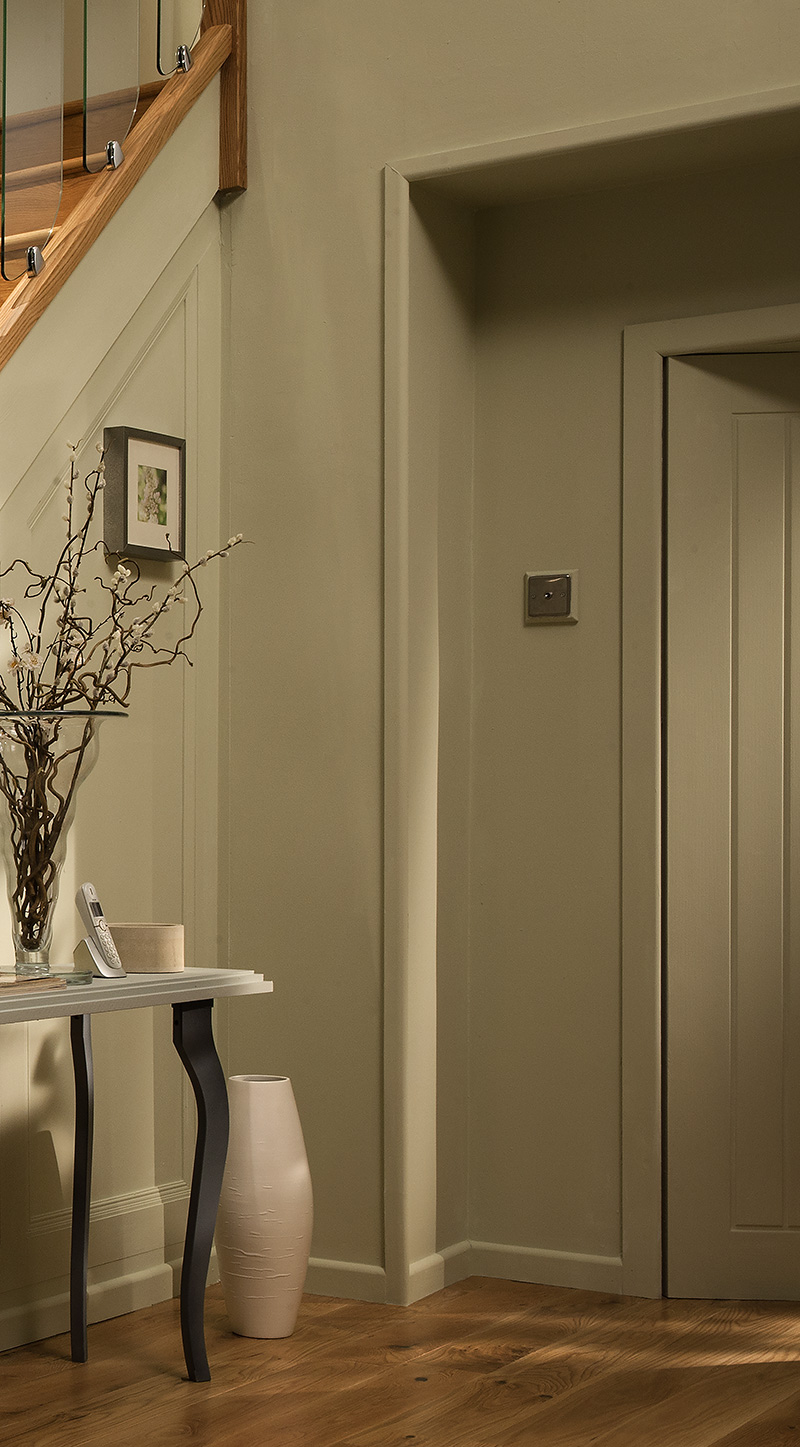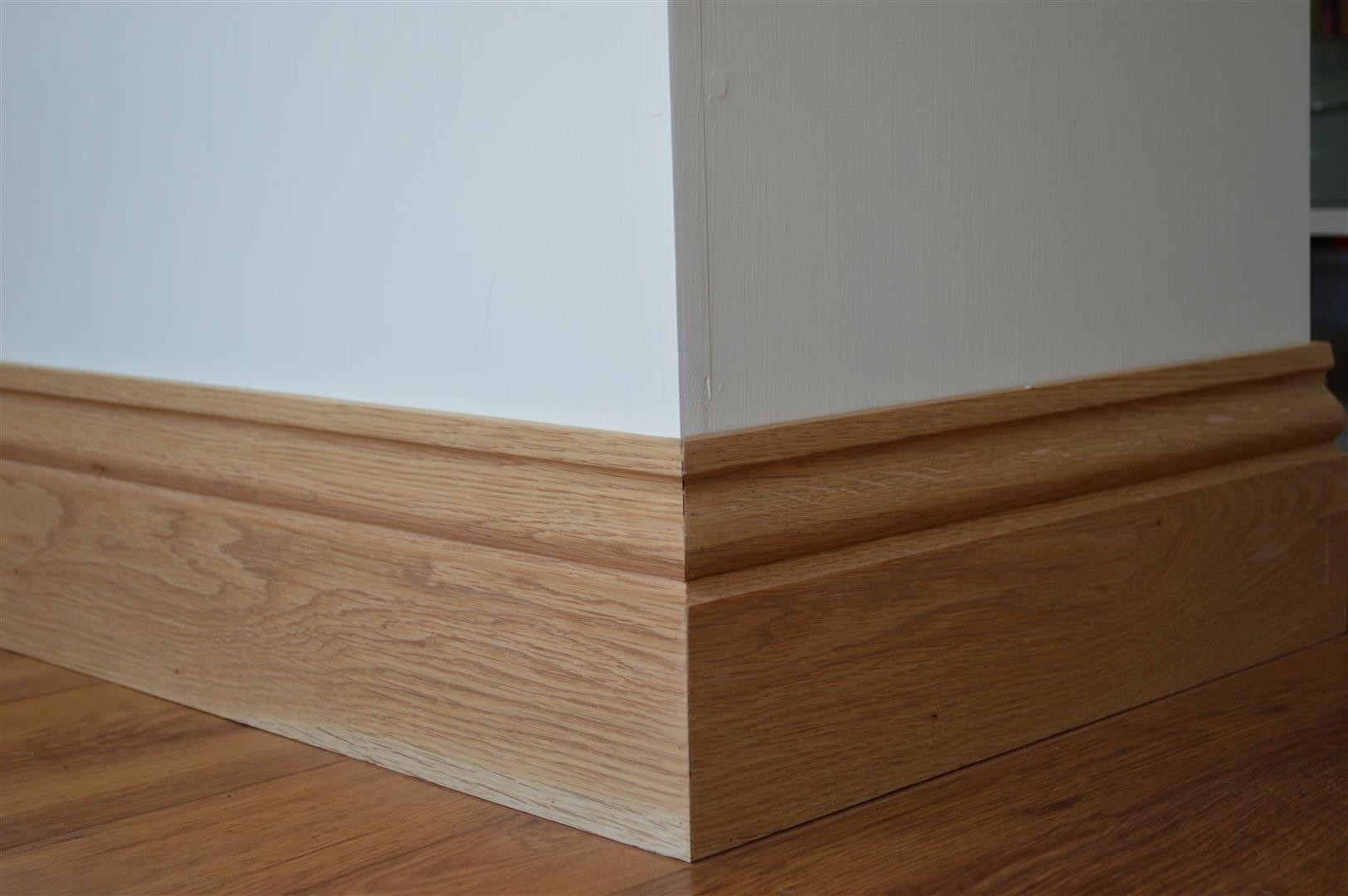Wooden baseboard: features of application in a city apartment and a private house (20 photos)
Content
During the installation of the floor covering between it and the wall, it is recommended to leave compensation gaps. They are necessary so that when the temperature changes, the finish layer of expensive finishing material laid on the floor does not rest against the wall and does not deform. In rooms with perfect geometry, the compensation gaps are 0.5-1 cm, if the builders erected walls without special diligence, then the gaps can reach 2-3 cm in places. They can be closed with a decorative element such as a wooden skirting board made of natural wood . It is a figured rail with a profile of a very different type. Simple installation, reasonable price and reliability make it the most popular type of skirting boards for many centuries.
The main types of wooden skirting boards
Technology does not stand still: the advent of quadrilateral milling machines, the rapid development of building chemistry and other innovative solutions diversified the production of skirting boards. In any case, the basis of this decorative element is natural wood. The industry offers the following types of wooden skirting boards:
- from the massif - it is created from a solid wooden beam;
- veneered - produced by gluing decorative veneers of expensive wood species on a base of cheaper wood varieties;
- spliced - it is created from several short wooden blocks by gluing using the "tongue-groove" technology.
The most widespread today is a wooden floor plinth made of inexpensive coniferous wood. Among its advantages are affordable price and a wide selection of profile types. Among the shortcomings is the presence of knots, however, manufacturers today are strictly sorting their products, offering customers, including products without this drawback.
A massive wooden skirting board made of oak or cherry has a high price. For this reason, manufacturers of high-quality products have mastered veneering technology. They paste a classic wooden skirting board “pine” with a thin layer of wood of expensive species. The veneers of oak, wenge, merbau, cherry, black ash and various exotic species are used. This technology allows us to produce an exclusive design skirting board for expensive interiors. Moreover, its price is not much higher than that of a high-quality pine skirting board.
Glued wood is very popular today. Skirtings are created using this technology: a short beam is carefully selected and spliced along the length. As a result, it is possible to produce a skirting board without knots and wood damaged by rotting. Such material often serves as the basis for veneered plinths, but can also be used independently in the interior.
You can decorate the slots not only between the wall and the floor, but also between the wall and the ceiling. In addition to the floor, there is also a wooden ceiling plinth, commonly called the fillet. It differs from the skirting board in smaller dimensions in height and width. It can be made from such wood species as pine, spruce, linden, oak.
Skirting board variety
Various types of wooden skirting boards are produced depending on the decorative characteristics of the profile. All of them can be divided into three large groups:
- wide wooden skirting boards;
- figured plinth;
- high skirting board.
The device of wooden skirting boards is extremely simple: in profile, any type of this decorative element resembles a rectangular triangle, the long side of which plays the main decorative role. If the base of the triangle has a large length, then this is a wide wooden plinth, designed to close slots of a significant size. For small compensation clearances, a high skirting board with a narrow base is used.
High and wide floor skirting boards have a front side with simple geometry. It is such decorative elements that can be covered with veneers of expensive wood. A figured skirting board traditionally has an approximately equal height to base ratio, while its front surface has a complex configuration. Using such a wooden skirting board for the floor, it is simply varnished.
The result is a decorative element with exclusive characteristics, because nature does not repeat the texture of natural wood. If used for decorating a skirting board with a large number of knots, then it is better to paint it. Such a figured white baseboard fits perfectly into the interior of the kitchen or living room, created in the style of minimalism.
How to choose a skirting board?
Plinths are made from a wide variety of materials: plastic, ceramics, MDF, aluminum, polystyrene foam. It is completely unfair to install a wooden plinth only in those rooms where the wooden floor is laid. This type of decorative elements is perfectly combined with such types of flooring as linoleum, parquet, parquet board, laminate. A variety of profiles and the ability to select a specific wood species makes the choice as simple and optimal as possible.
In the kitchen you can use a white wooden baseboard, covered with high-quality paint, it will last several decades. A decorative skirting board with a front surface of complex shape fits perfectly into classic interiors. It can be used in any room of the house, decorated in the style of Rococo, Baroque, Art Nouveau or Art Noir. Skirting board with a strict profile fits perfectly into the interiors of the style of minimalism, hi-tech.
Features of mounting a wooden skirting board
One of the main advantages of this material is the simple installation of a wooden baseboard. If you use products from soft wood, such as pine, then you can use simple or finish nails for fastening. Stronger species such as oak and larch require a more thoughtful installation approach. As a fastener, self-tapping screws are used, having previously drilled holes for them in the baseboard. The cap of the fastener must be recessed. Before installation, the baseboard must be coated with a protective varnish, wax or paint.
The fastening of veneered wooden skirting boards differs by the installation technology. A clogged nail or a screw-in screw can damage the decorative surface, so manufacturers produce veneered skirting with a special shape on the back surface. Thanks to the original geometry and the used clips, the installation of a wooden skirting board is fast and high quality. The clips are fixed to the wall at a distance of 25-50 cm from each other.
The angles of wooden plinths require special attention, the joining of two decorative elements requires skill and the use of special tools.
When installing an ordinary wooden baseboard, it is sawn with a miter box at a 45-degree angle in opposite directions. This carpentry tool is easy to use, but the quality of the final result does not always satisfy specialists.Professionals use special saws, which can be used to set the angle of rotation to the nearest degree. For such a tool, you can choose a canvas that can easily cope with oak or larch wood. The cut is perfectly smooth and precise, and the docking point in the corner has no flaws.
How to fasten a wooden baseboard covered with veneer in the corners of the room? Many manufacturers produce special corner elements for this. They are of two types - internal and external - are covered with the same oak or cherry veneer as the main baseboard. Such corner elements are fixed using special clips that are attached to the walls of the room. First, the angles are set, after which the plinth is installed.
Wooden and veneered skirting boards can be glued to the wall using wood glue. To do this, you must have vertical structures with perfect surface geometry.
